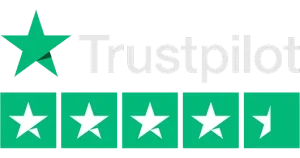Hey there, savvy marketer! If you’re diving into the world of digital advertising, you’ve probably come across the term Cost Per Click (CPC). It’s one of those metrics that everyone talks about but not everyone fully understands. No worries, though! This guide is designed to break down CPC in a way that’s easy to grasp, yet comprehensive. We’ll cover everything from what CPC is to why it’s crucial for your advertising campaigns. So, let’s get started!
Understanding Cost Per Click (CPC)
Before we delve into the nitty-gritty, let’s clarify what we mean by Cost Per Click. It’s a fundamental concept that every digital marketer should understand, as it directly impacts the effectiveness and ROI of your advertising campaigns.
What Exactly is CPC?
First things first, Cost Per Click, or CPC, is the amount you pay each time someone clicks on your online ad. Think of it as the price tag for engaging a potential customer. It’s a key metric that helps you gauge the effectiveness of your advertising efforts.
There are two main types of CPC you should know about: Average CPC and Actual CPC. Average CPC gives you a broader view by calculating the average cost of clicks over time, while Actual CPC is the specific cost of a single click. Both are essential for different aspects of campaign analysis.
Why CPC Matters
Now that we’ve covered what CPC is, let’s talk about why it’s a metric you should care about. Understanding CPC is like having a roadmap for your advertising journey—it helps you navigate towards your goals more effectively.
ROI and Budgeting
Why should you care about CPC? Well, it’s all about the Return on Investment (ROI). A lower CPC generally means you’re getting more bang for your buck. It’s like buying a designer knock-off that looks just as good as the real thing!
Moreover, understanding CPC is crucial for budget optimization. Knowing the cost of individual clicks helps you allocate your budget more effectively. You wouldn’t want to spend your entire budget in one place, would you?
Calculating CPC
So, how do you go about calculating CPC? Don’t worry; it’s not rocket science. In fact, understanding how CPC is calculated can give you valuable insights into your advertising performance.
The Simple Math
Calculating CPC is easier than you might think. The formula is: CPC = Total Ad Spend / Total Clicks. This gives you an average cost per click, which is super useful for general campaign evaluation.
Factors That Influence CPC
Several factors can influence your CPC. These include:
- Quality Score: This is a metric that Google uses to measure the relevance of your ad. A higher Quality Score can lower your CPC.
- Competition: The more people bidding on a keyword, the higher the CPC tends to be.
- Ad Position: Ads that appear at the top of the page usually cost more per click.
Strategies to Lower CPC
Alright, let’s get to the fun part—how to lower your CPC. Lowering your CPC is like finding a shortcut on a long drive; it gets you to your destination faster and more efficiently.
Quality Score Optimization
Improving your Quality Score is like acing an exam—it boosts your overall grade, or in this case, lowers your CPC. You can improve your Quality Score by making your ad copy more relevant, improving your landing page experience, and using more relevant keywords.
Long-Tail Keywords
Another trick up your sleeve should be long-tail keywords. These are longer, more specific keywords that are less competitive but can yield more qualified clicks. It’s like fishing in a less crowded pond—you’re more likely to catch something!
Real-World Examples and Stats
Let’s sprinkle in some real-world data to make this even more compelling:
- A recent study showed that the average CPC across various industries ranged from $1 to $7.
- Case Study: An e-commerce brand managed to reduce its CPC by 20% through Quality Score optimization.
- Statistics indicate that using long-tail keywords can reduce CPC by up to 30%.
Difference Between CPC and Lead Conversion Rate
CPC (Cost Per Click) and Lead Conversion Rate are both crucial metrics in digital marketing, but they serve different purposes. CPC is primarily a financial metric that tells you how much you are paying for each click in your pay-per-click (PPC) advertising campaigns. It’s often used to gauge the cost-effectiveness of your paid advertising efforts. On the other hand, Lead Conversion Rate is a performance metric that measures the effectiveness of your marketing strategies in converting leads into customers, subscribers, or any other desired action. It’s expressed as a percentage and gives you an idea of how well your marketing funnel is working.
Despite their differences, CPC and Lead Conversion Rate are interconnected in many ways. A lower CPC doesn’t necessarily mean higher profitability if those clicks are not converting into leads or customers. Conversely, a high Lead Conversion Rate may not be as impressive if the cost per acquisition (CPA), influenced by CPC, is too high. Therefore, optimizing both metrics in tandem is crucial for a balanced and effective marketing strategy. By keeping an eye on CPC, you can manage costs while focusing on Lead Conversion Rate to ensure those clicks are turning into valuable actions.
CPC vs. CPM
Cost Per Click (CPC) is a digital advertising strategy where advertisers pay for each individual click on their advertisement. This model is particularly advantageous for campaigns that target specific user actions or lead generation, as it directly measures user engagement. In essence, advertisers are charged only when users show active interest by clicking on their advertisement.
On the other hand, Cost Per Mille (CPM), also known as Cost Per Thousand, refers to the cost an advertiser pays for 1,000 impressions or views of their ad. This approach is commonly utilized for brand awareness and visibility campaigns, emphasizing the total number of times an ad is displayed, irrespective of user engagement or click-through.
In comparing the two, while CPC is tailored for driving specific user actions and gauging direct engagement, CPM focuses predominantly on amplifying brand exposure through the sheer volume of ad displays.
CPC on Facebook: A Special Focus
When discussing CPC, it’s essential to highlight its role in Facebook advertising. On Facebook, the average CPC can vary significantly depending on factors like industry, target audience, and ad quality. For instance, the average CPC for the e-commerce sector might be around $0.70, while for the finance sector, it could go up to $3.77.
Facebook offers a unique feature called Relevance Score, similar to Google’s Quality Score, which impacts your CPC. A higher Relevance Score can lead to a lower CPC and more effective ad placements. This score is calculated based on the positive or negative interactions your ad receives, making it crucial to create highly engaging and relevant ads to optimize your CPC on Facebook.
CPC on Instagram: What You Need to Know
Instagram, owned by Facebook, is another vital platform for advertisers, especially those targeting a younger demographic. The CPC on Instagram tends to be slightly higher than on Facebook, averaging around $1.20 per click according to some reports. This is often due to the highly visual and engaging nature of the platform, which can lead to more qualified leads.
Just like Facebook, Instagram uses a similar algorithm to determine CPC, factoring in elements like ad relevance and engagement. However, Instagram ads often include additional features like “Swipe Up” links in Stories, which can also influence your CPC. Therefore, understanding the specific nuances of Instagram advertising can help you better manage your CPC and overall ad performance on the platform.
CPC on TikTok: The New Frontier
As the newest kid on the block, TikTok has rapidly become a hotbed for digital advertising. With a predominantly young audience, the platform offers a unique opportunity for brands to engage with consumers in a more dynamic way. The CPC on TikTok is still a developing metric but tends to range from $1 to $2, depending on factors like ad format, targeting, and industry.
What sets TikTok apart is its focus on video content, which can be both an advantage and a challenge when it comes to CPC. High-quality, engaging videos can lead to lower CPCs, but the competition for attention is fierce. TikTok also offers a variety of ad formats, including In-Feed Ads and Branded Hashtag Challenges, each with its own implications for CPC. Therefore, understanding the TikTok landscape is crucial for optimizing your CPC on this emerging platform.
Wrapping It Up
So there you have it, folks! Cost Per Click (CPC) isn’t just a buzzword; it’s a critical metric that can make or break your advertising campaigns. Understanding its nuances can help you maximize ROI, optimize your budget, and ultimately, achieve your marketing goals.
Whether you’re a seasoned pro or a newbie, having a solid grasp of CPC is like having a superpower. It empowers you to make data-driven decisions that can significantly impact your campaign’s success. So go ahead, use this newfound knowledge to conquer the digital advertising world!







